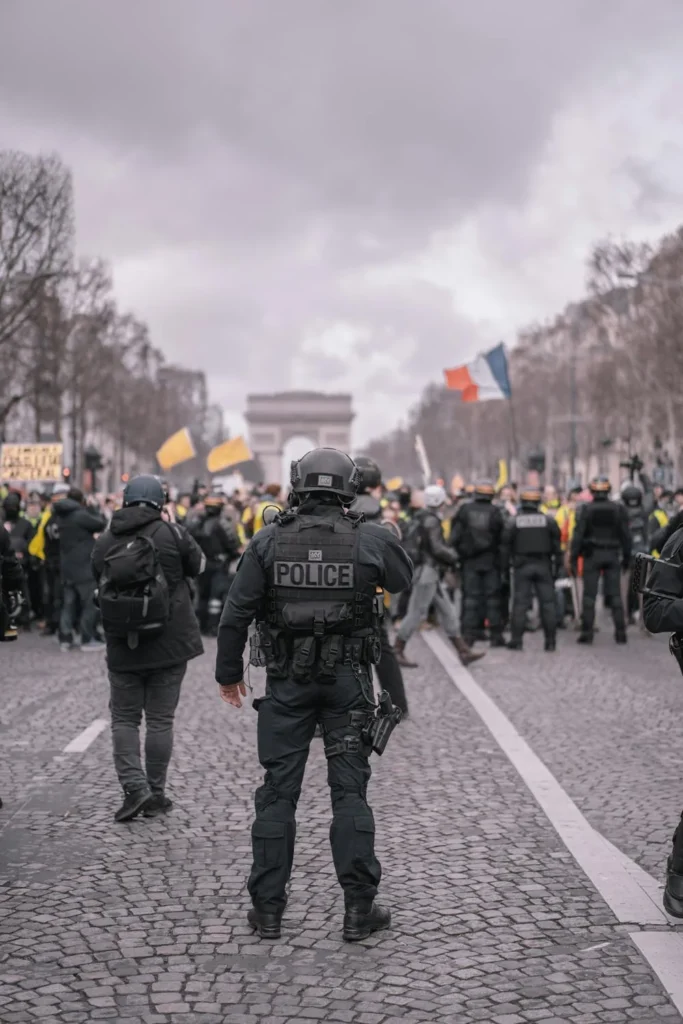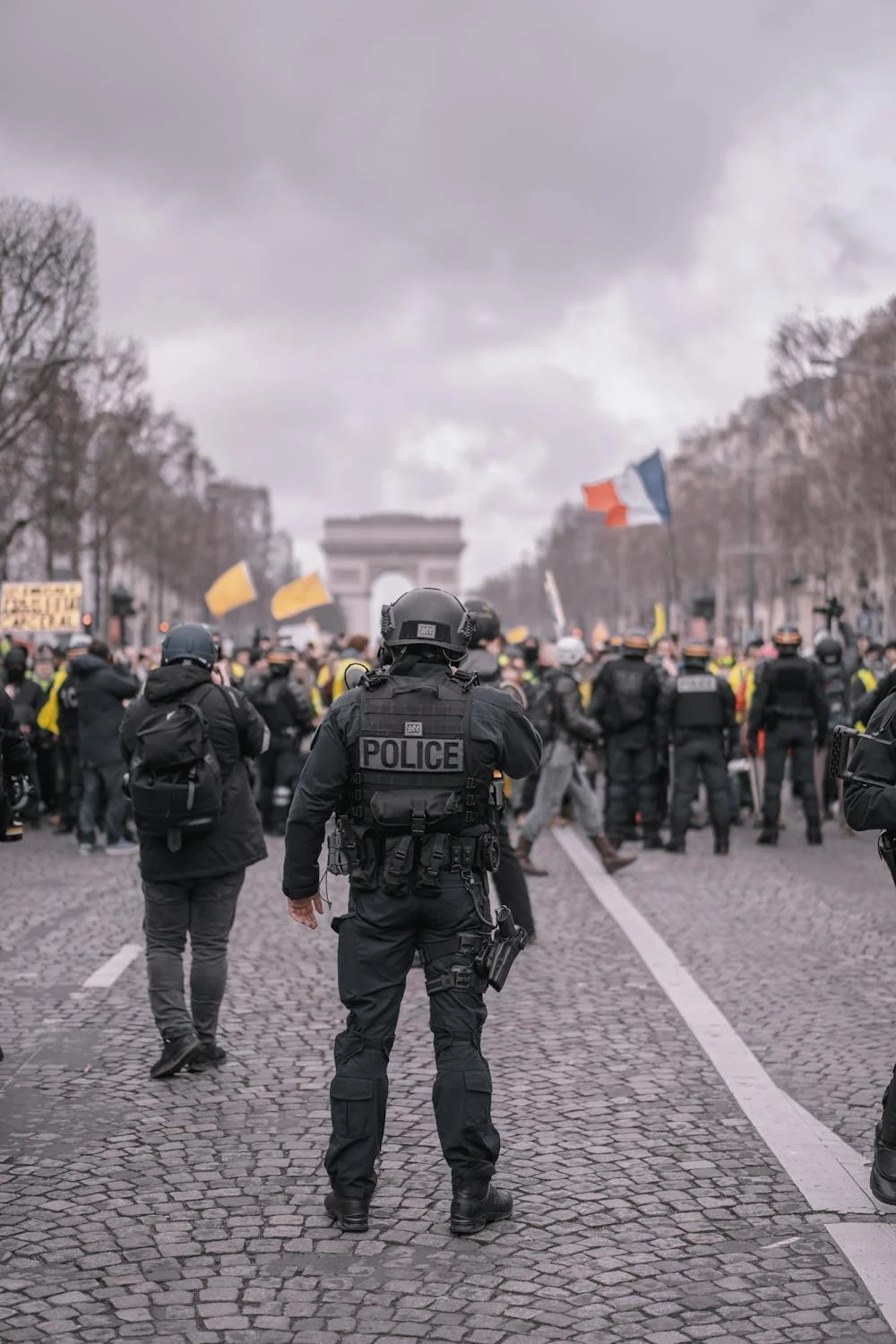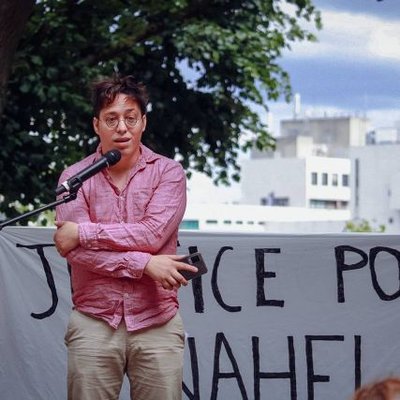
June 2025. With two years to go before the next presidential election, the far right has never seemed closer to power in France. This rise is no accident. It is the result of a structural crisis of capitalism, the disintegration of progressive forces, and a deliberate strategy of state-driven fascisization. The threat is not merely electoral: it is cultural, institutional, and police-based, and affects all aspects of social life. Antifascist struggle must therefore be rooted in a comprehensive analysis and a response that matches the magnitude of the threat.
I. State of Play
The far right topped the polls in the 2024 European and snap legislative elections. It was only the left-wing vote that prevented them from taking power. The upcoming municipal elections may once again play in their favor, further strengthening their local foothold. At the same time, the far right benefits from a consolidated party apparatus, an expanding union network (particularly within the police), and a highly effective normalization strategy. Today, this strategy revolves around a flagship party—the National Rally—and an ecosystem of radical groups. The entry into government of a radicalized right, closely aligned with the identitarian movement—exemplified by figures such as Bruno Retailleau as Minister of the Interior—has allowed them to shape national political discourse.
Far-right rhetoric is omnipresent: in private media, on social networks, and in popular culture. Themes such as immigration, security, and Islam are approached through an increasingly hegemonic reactionary lens. Powerful capitalist empires, led by billionaires like Bolloré and Stérin, have placed their fortunes in service of ideological warfare. Much of this battle takes place online, where Jordan Bardella, leader of the National Rally, is a true celebrity—especially among the youth.
The rise of far-right ideas is accompanied by the rightward drift of the central state. Gradually, the bourgeois bloc is abandoning its liberal framework to promote restrictions on individual freedoms. The threat no longer comes solely from the far right: the neoliberal order itself is becoming fascist. For example, Paris Saint-Germain’s Champions League victory and the ensuing unrest triggered a narrative of the “internal enemy.” Minister Retailleau described young rioters as “barbarians,” marking them as radically and almost ontologically different from “real French people.” A segment of the left is beginning to cave to this pressure, embracing ideas like the “brutalization” of society without criticizing capitalism’s role as a catalyst for violence.
In spring 2025, Bardella traveled to Israel, continuing a well-rehearsed strategy of international rehabilitation and ideological obfuscation. The visit aimed to bolster the National Rally’s respectability by portraying it as the most pro-Israel party, masking its antisemitic and Vichyite roots. In reality, the trip sought political legitimacy through state-like diplomacy and the consolidation of alliances with authoritarian right-wing forces globally. It also aimed to fracture political memory: instrumentalizing the fight against antisemitism to silence critics while allowing structural racism—against Arabs, Muslims, Black people, Roma, and migrants—to flourish. As always with the far right, this is not a pivot but a mask, one that reveals the centrality of ethnonationalism in its political project.
The left’s only real victory in 2025 was the conviction of the National Rally and Marine Le Pen in March for misappropriation of public funds. Yet even this was spun into political messaging: victimhood reinforces their “us against the world” narrative. Again, parts of the left echoed far-right rhetoric by denouncing the judiciary’s power over politics and claiming political destabilization orchestrated by the government through the public prosecutor’s office.
II. Structural Causes of the Rise: A Marxist Perspective
In the face of ecological collapse, inflation, deindustrialization, and mounting social anger, the ruling classes are embracing increasingly authoritarian forms of governance. Parliament is bypassed by decrees and defense councils; judicial repression of protest becomes systematic; the executive no longer hides its alignment with security doctrines. In this context, the far right is not an anomaly but a functional cog in capitalism. It diverts anger toward the most vulnerable, naturalizes social hierarchies, and uses racism as a tool of governance.
Parliamentary left forces, meanwhile, oscillate between appeals to republican reason and moralistic opposition. Their failure to propose a bold, transformative strategy breeds confusion and abstention. But the deeper root of their impotence lies in the structure of French political life, which orbits the presidential election. This contest, which concentrates media power and personal ambition, prevents long-term coalition-building. It imposes a top-down pace, a cult of leadership, and a logic of competition—when the left should be rebuilding solidarity, social conflict, and popular alliances.
The entire left-wing political field seems trapped in cycles of positioning and tactical maneuvering, without building a popular emancipation project that rises to the threat. Condemnations of the far right are frequent but lack a clear and durable political strategy. Connections to real-world struggles—strikes, anti-factory closure campaigns, resistance to police violence—are too often superficial or instrumental. Artificial oppositions are created between two imagined Frances: the rural towns and the urban high-rises. These narratives divide class struggle and ignore shared interests.
Meanwhile, mechanisms of solidarity and collective conflict are collapsing. The traditional structures of political education—unions, parties, civic associations—are eroding, hit by precarity, individualism, and even far-right infiltration. Fear replaces anger; hatred replaces hope. The far right thrives in this void, reviving a discourse of dignity through labor that is built on exclusion: glorifying “hard-working French people,” denouncing “welfare cheats,” and stigmatizing foreigners. This nationalist work ethic, false but potent, takes root in the left’s ideological abandonment of labor politics.
Widespread precarity, gig work, workplace suicides, and endless layoffs have not triggered a coherent political counter-offensive. Worse, the closure of France’s last steelworks—symbolized by ArcelorMittal—marks not only industrial decline but political dispossession. In these ravaged territories, the far right thrives for lack of alternatives. Unless the left rebuilds a politics of labor rooted in ecological planning, collective control of production, major reductions in working hours, and workplace democracy, it will continue to leave space for social fascisization.
This dynamic must be situated within France’s specific historical configuration. As a core capitalist country and a neocolonial power with outsized military and diplomatic influence, France is not simply a nation in crisis—it is a former empire in retreat. Today’s crisis cannot be understood without the colonial legacy, which the far right seeks to revive through narratives of domination, racial superiority, civilizing missions, and population hierarchies.
In France, class struggle is inseparably linked to resistance against imperial legacies, racialization, and spatial-economic inequality. Working-class neighborhoods, deindustrialized regions, and overseas territories are the places where economic domination and colonial history intersect.
The French bourgeoisie never broke with a strong, authoritarian, repressive, technocratic state. The post-war Fordist compromise—based on wage labor, growth, and middle-class integration—has collapsed. French capitalism today rests on the exploitation of the most precarious, on rent, on the expulsion of working classes from urban centers, and on a massive security apparatus. Understanding the rise of the far right therefore requires linking class analysis to colonial history and drawing the necessary conclusions for a rooted, popular, internationalist antifascist strategy.
III. A Fragmented But Alive Antifascism
May Day demonstrations, commemorations of Clément Méric’s murder, and protests against authoritarian laws all show that antifascist resistance is alive—but struggles to coordinate nationally. Yet rising social tensions and far-right violence underline the urgency of a broad front. The attack on Le Prolé bar in Alès by far-right militants was no isolated incident: it represents a strategy of intimidation targeting spaces of popular sociability. These attacks thrive in a climate of police impunity, political repression, and the media normalization of hate. They also show the radicalization of segments of the youth toward the far right.
In response, local collectives, unions (Solidaires, CGT), associations (LDH, Attac), antifascist groups, feminist, ecological, and antiracist movements are rebuilding on the ground. What happened on June 9, 2025, in Montargis was a turning point. A working-class city steeped in social struggle, Montargis was chosen by the National Rally to host a major international rally with Orbán, Salvini, and Abascal. The goal: to impose an authoritarian vision of power in a popular stronghold.
The response was massive. A united, inclusive, popular mobilization sent a clear message: the struggle is alive. Over 4,000 people marched in a town of 15,000, at the call of the CGT, PCF, France Insoumise, and many other left-wing groups. This show of strength proves that antifascism can once again become an offensive project, connecting labor, equality, and popular sovereignty.
At the same time, solidarity with the Freedom Flotilla to Gaza—violently repressed by the Israeli army—embodies internationalist antifascism. It affirms a clear awareness: the fight against the far right is not confined to national borders. It entails a global rejection of imperialist, racist, and authoritarian logics.
Antifascism can no longer content itself with denunciation: it must rebuild. This requires a strategic articulation of historical memory, social conflict, territorial organizing, internationalism, and the struggle for power. For this is what the left currently lacks: a vision of power not as a solitary electoral artifact, but as the extension of mobilization, political education, and collective consciousness. The battle will not be solely moral or symbolic: it will be organizational, social, and political. It demands that everyone on the left take their place in the movement.
The fascisization of French society is no spontaneous phenomenon: it is the result of political, cultural, and economic processes. The antifascist struggle cannot be reduced to a moral stance: it must be rooted in the reconstruction of a class-based political strategy, anchored in labor, direct democracy, and popular ecology. The battle for 2027 starts now—in the streets, in the neighborhoods, in the workplaces, and in the battle of ideas.









